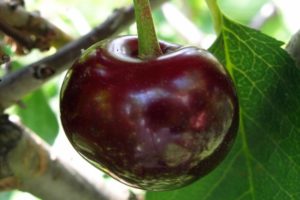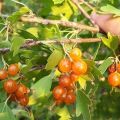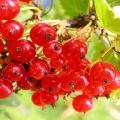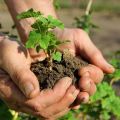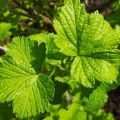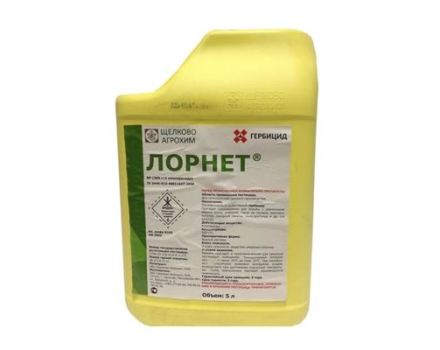Distinctive features of currant and cherry hybrids, planting and care, reproduction
Many Russian gardeners are trying to grow unusual varieties of horticultural crops on their backyards. Experts in such a situation advise paying attention to the hybrids of currants and cherries, which give a decent harvest of berries that differ not only in appearance, but also in their unique taste. Thanks to the efforts of breeders, there are more than one variety of such crops on the horticultural market today, so before planting it is recommended to learn about the best representatives and the rules of care.
Origin story
The emergence of hybrids is associated with many years of work of breeders, who for many years have been conducting experiments to improve the external and taste characteristics of currant and cherry fruits, and to increase the stress resistance of crops to environmental factors. The initiator of such work in our country was Michurin, whose first results in obtaining new crops were not always positive. Work on breeding hybrids was actively carried out in Germany, Sweden, England.
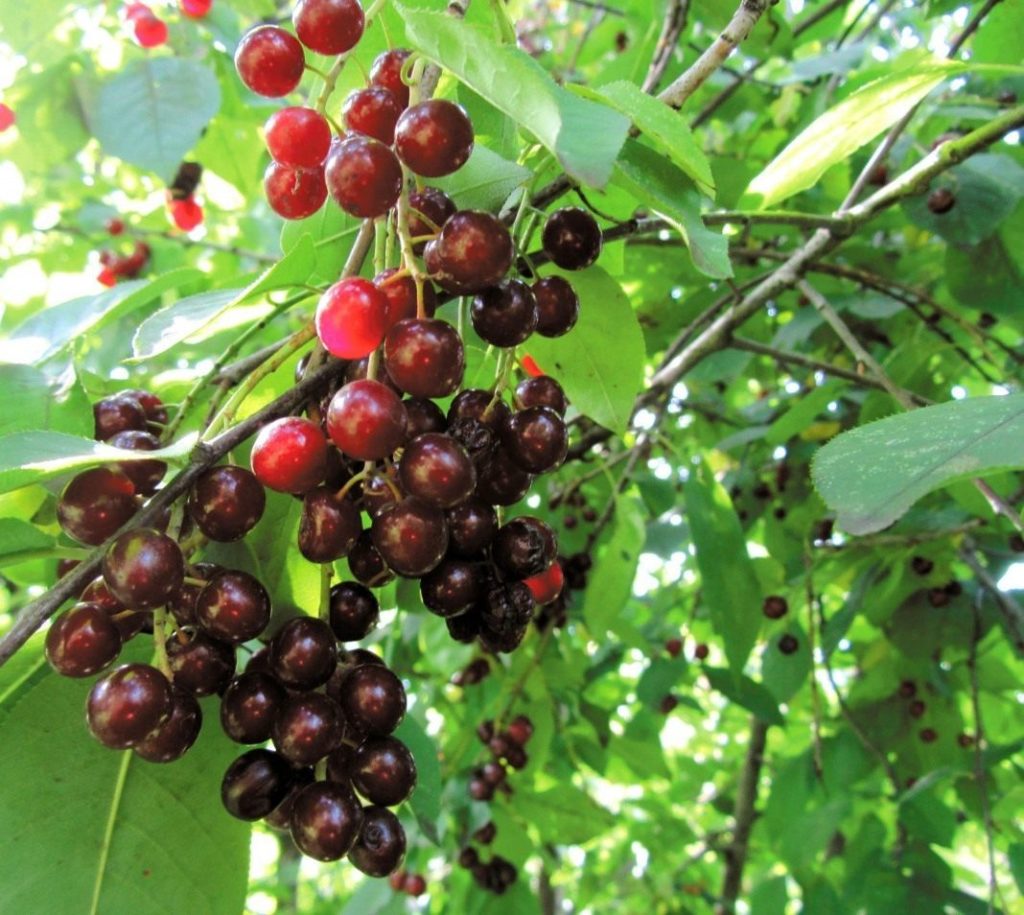
Today, there are many hybrid varieties of currants and cherries on the horticultural market. The main differences lie in the appearance and taste of berries, requirements for growing conditions.
Varieties
The result of the efforts of breeders to obtain a hybrid of currants and cherries was the emergence of several varieties of yoshta. As a result of crossing gooseberries and currants, the following types of garden crops were obtained:
- EMB is a tall bush up to 1.8 m high, the fruits reach a size of up to 5 g and ripen for 2 months;
- Crohn is a medium-yield variety with small berries that can not fall off for a long time;
- Rekst is the result of Russian selection, giving berries up to 3 g;
- Yohini is a productive variety with a unique berry flavor, capable of reaching a height of 2 m;
- Moro is a columnar variety that produces fruits with a nutmeg aroma and grows up to 2 m.
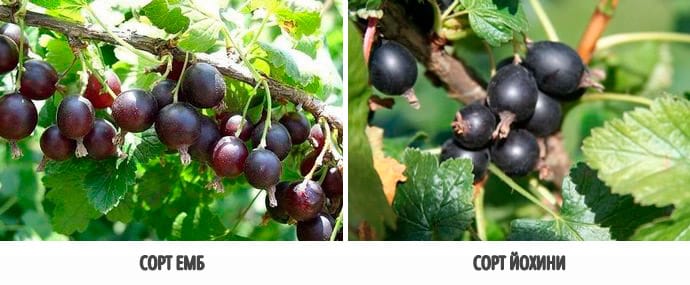
A hybrid of cherries and cherries, the so-called cerapadus, have not gained popularity in our country due to the specific taste of the berries. Experiments with cherries ended positively, the result was the emergence of a new species - Duke. The most popular varieties include Miracle cherry, Spartanka, Komsomolskaya.
A hybrid of cherry and gooseberry differs from the parents in a stronger immunity to diseases and the ability to tolerate difficult growing conditions.
They are not characterized by their shortcomings in the form of thorns and lack of resistance to frost. The advantage of plants is the larger berries with a unique taste.
Planting and growing conditions
Yoshta forms a bush that reaches 2 m in height.An adult shrub has about 20 shoots of different ages, and the root system extends 0.5 m deep. The plant is often used as an ornamental shrub. The plant requires planting in a lighted open area. The distance between the bushes should be at least 0.5 m and should be 0.7-2 m from other crops. The soil should be loose, rich in potassium and organic matter.
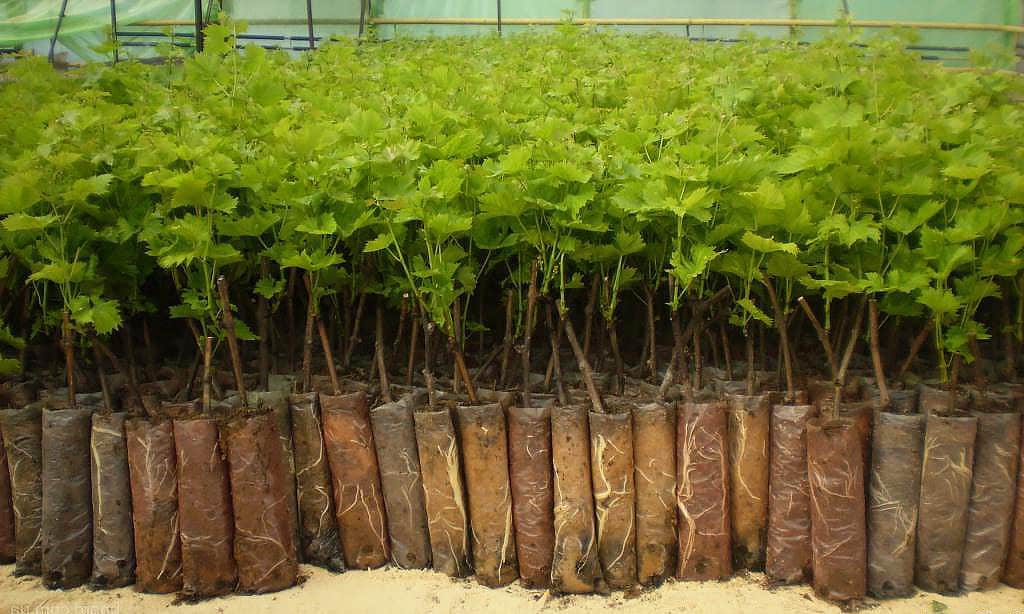
Yoshta is planted in the spring or at the beginning of the autumn season. The plant is fed with the same fertilizers that are used for better growth of currants and gooseberries. Single bushes need to form a crown; significant costs for pruning shoots are not required. The hybrid is demanding for sufficient watering.
Cherry hybrids are also planted in illuminated areas, keeping a 5 m distance between trees. Most crops are self-fertile, therefore, a number of pollinators are required to obtain a harvest. Growth requires fertile soil containing a mixture of humus, turf, and nitrogen-containing fertilizers. Plant care is not difficult. In the spring, pruning and preventive measures are required to prevent fungal infection. In case of insufficient natural precipitation, additional watering is carried out.
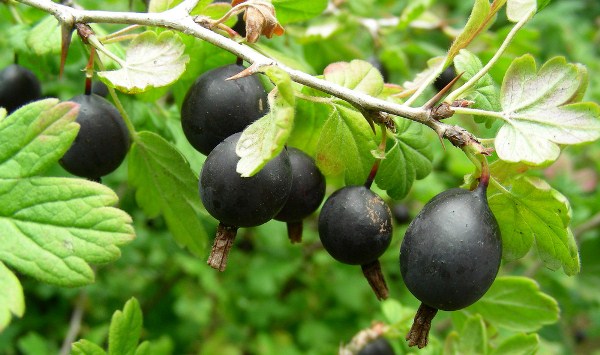
Reproduction methods
Reproduction of hybrids is performed by cuttings, basal processes or by dividing a bush. The latter method is used only for yoshta, if a plant transplant is necessary. For survival, 1 or 2 healthy and strong shoots with strong roots should remain. Before planting, it is recommended to treat the root shoots with charcoal. The guarantee of obtaining a harvest of proper quality is the acquisition of a healthy high-quality seedling, the choice of the correct planting site and adherence to the recommendations for growing the plant.
